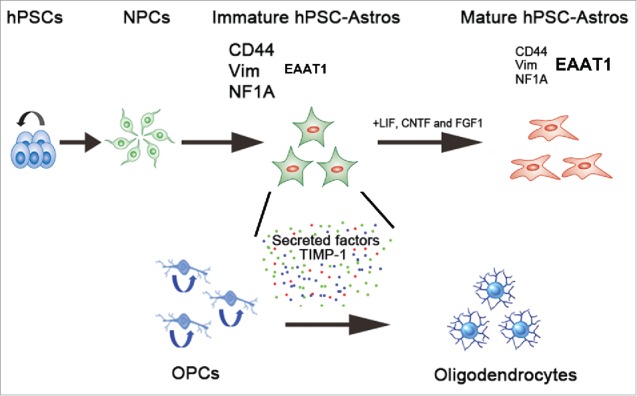Figure 1.

A conceptual diagram showing differences between immature and mature hPSC-astroglia in promoting oligodendrogenesis. By differentiating hPSCs into astrocytes at defined immature and mature stages, we investigate the effects of human astrocytes on oligodendrocyte development. The expression of CD44, vimentin and NF1A is higher in immature hPSC-Astros than that in mature hPSC-Astros. GLAST was expressed at higher level in mature hPSC-Astros than in immature hPSC-Astros. Compared to mature human astrocytes, the immature hPSC-Astros have stronger capability in regulating oligodendrocyte development, via released factors, such as TIMP-1. hPSC, human pluripotent stem cells; NPCs, neural progenitor cells; hiPSC-Astros, human pluripotent stem cell-derived astrocytes; Vim, vimentin; NF1A, nuclear factor-1A; GLAST, glutamate/aspartate transporter; LIF, leukemia inhibitory factor; CNTF, ciliary neurotrophic factor; FGF1, fibroblast growth factor 1; OPCs, oligodendrocyte progenitor cells; Colored dots, Secreted factors from immature hPSC-Astros that regulate oligodendrocyte development, such as tissue inhibitor of metalloproteinase-1 (TIMP-1).
